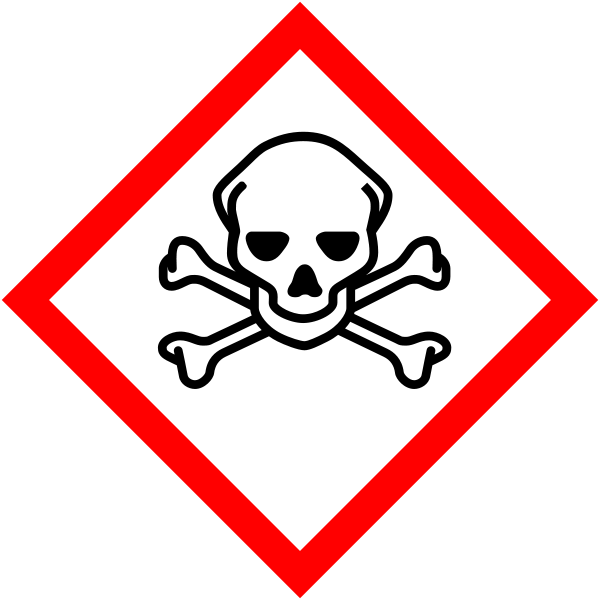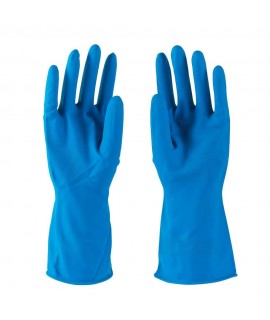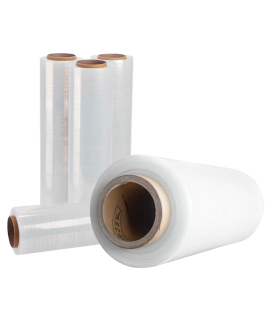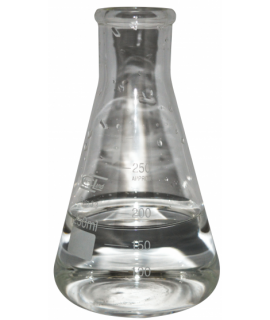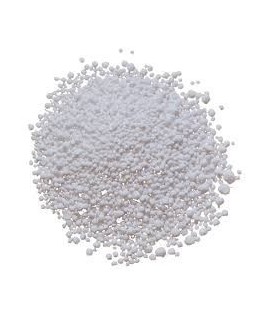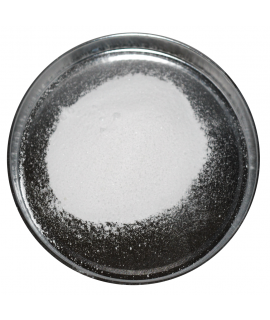|
Parameter |
Attribute |
|
Didecyldimethylammonium chloride |
DDAC, dimethyldidecylammonium chloride, 1-Decanaminium, N-decyl-N,N-dimethyl-, chloride, Didecyldimethylammonium chloride, Didecyldimethylammonium chloride, Didecyldimethyl ammonium chloride, Quaternium-12, Ammonium, didecyldimethyl-, chloride |
|
Formula |
C22H48ClN |
|
Structure |
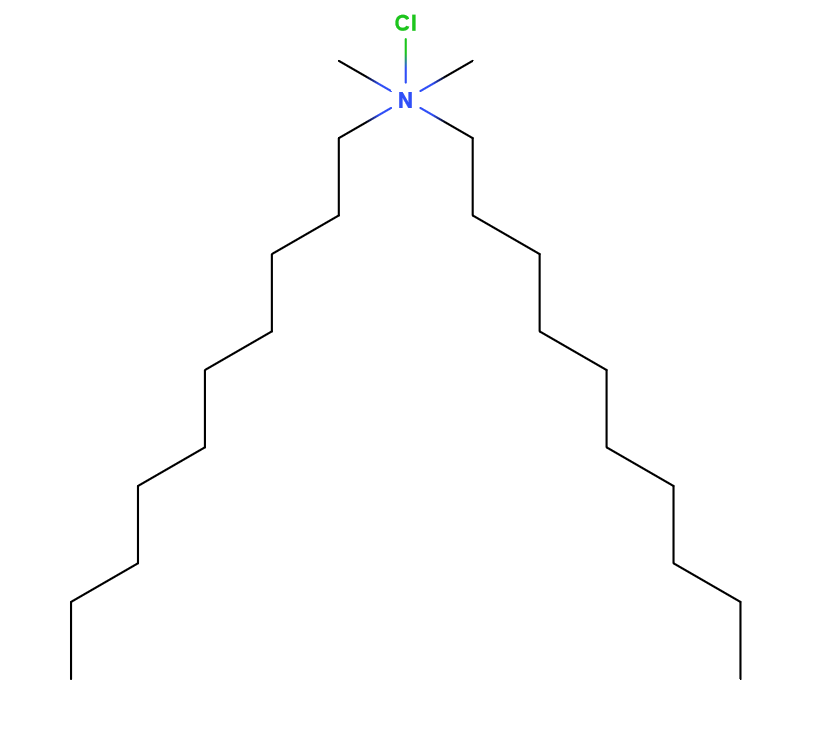 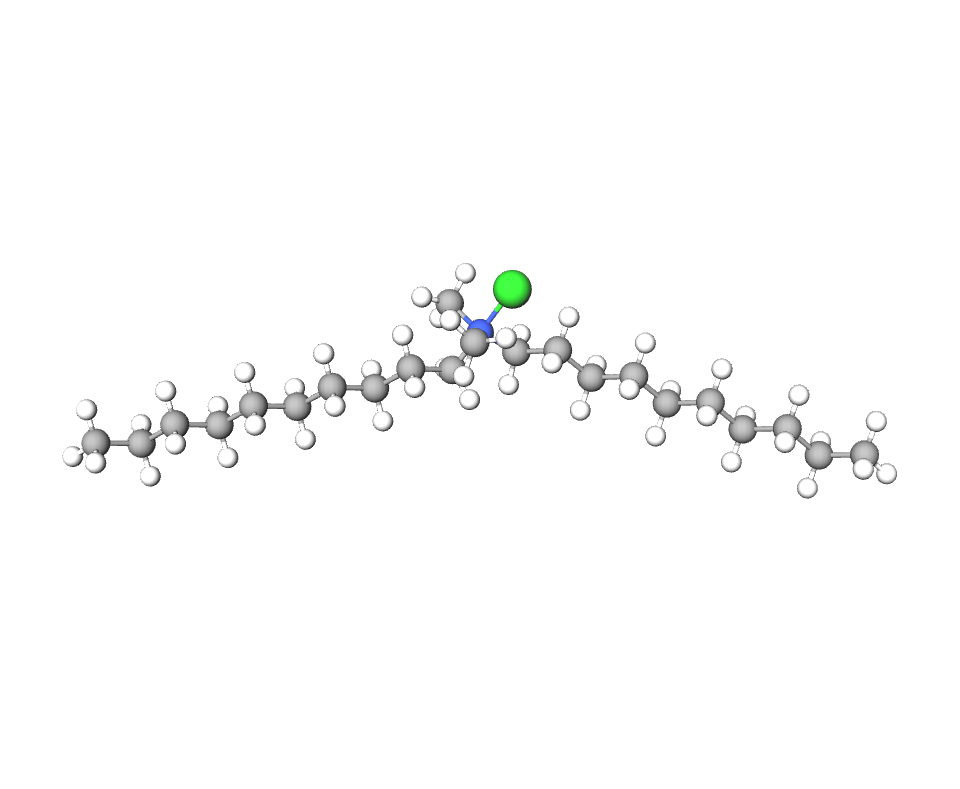 |
|
IUPAC |
N-Decyl-N,N-dimethyldecane-1-aminium chloride |
|
INCI |
DIDECYLDIMONIUM CHLORIDE |
|
CAS |
7173-51-5 |
|
Molar mass |
362.08 g/mol |
|
Density |
0,87 g/cm3 |
|
Solubility |
Miscible with water in any proportion |
Didehyldimethylammonium chloride (DDAC) is a quaternary ammonium compound used as an antiseptic/disinfectant. It causes disruption of intermolecular interactions and dissociation of lipid bilayers. The bacteriostatic (prevents growth) or bactericidal (kills micro-organisms) activity of DDAC depends on its concentration and the growth phase of the microbial population.3 It is a broad-spectrum biocide against bacteria and fungi, and can be used as a disinfectant laundry cleaner, recommended for use in hospitals, hotels, and industry.
In beekeeping, didehyldimethylammonium chloride is used to treat brood when it is attacked by blight. Brood rot (European or American foulbrood) is an infectious disease of initially uncovered and later covered brood. It is caused by Bacterium pluton, Bacillus alvei, Streptococcus apis. DDAC acts as a broad-spectrum antiseptic by disrupting the nutrition of the foulbrood bacteria, thus preserving the bee colony.
In medicine, N-decyl-N,N-dimethyl chloride is used extensively: concentrations ranging from 0.004% to 0.01% are used in eye drops. Higher concentrations are used in hand disinfection products, for the removal of unpleasant odours (from legs, feet, armpits). Even higher concentrations are used for a wide range of microbial and viral disinfection. It is also used in gynaecology, surgery, ophthalmology, paediatrics, OT, as well as for the sterilisation of surgical instruments, endoscopes and surface disinfection.
In cosmetics, DDAC is used as a disinfectant, and at the same time as an emulsifier to increase the miscibility of fats with water. Dimethyldimethyldecylammonium chloride is often used as an additive in emulsions to obtain clear emulsions, e.g. for dilution of fragrance concentrates, for mixing essential oils, or for the addition of water-based extracts to fat-based products. DDAC is also used as a foaming agent and conditioner because its cationic nature makes wool fabrics and hair soft, and is therefore found in shampoos, hair masks and conditioners. INCI Key Functions:
- Antistatic: reduces static electricity by neutralising the electrical charge on the surface
- Emulsifying: Promotes the formation of intimate mixtures between immiscible liquids by modifying surface tension (water and oil)
- Hair Conditioner: makes hair easy to comb, soft and shiny and/or gives volume, lightness and shine
- Surfactant: reduces tension on the surface of the cosmetic and contributes to the even distribution of the product during application
In water treatment, DDAC is used in ornamental pools and rock gardens to protect them from algae formation and reproduction. It can also be found in some aquarium and aquaculture products. Concentrations of 0,5-5 mg/l of active quaternary ammonium are encountered in the treatment of bacterial type fish diseases. DDAC is also used as an algaecide in swimming pools to inhibit water mutilation and algal growth. It is more popular than BAC because it has a lower foaming capacity.
In the wood industry, didecyldimethylammonium chloride is used as an antiseptic or antiseptic impregnant to protect wood from rotting or fungal decay. It is also used to destroy rot in damaged wood. The advantage of using DDAC is its transparency, i.e. the wood does not discolour, but this is also a disadvantage because when the wood is treated it is not visible where it has been treated.
In the paper industry, DDAC is used in the preparation of paper to reduce biofouling and at the same time to give strength and anti-static properties to the paper produced.
In horticulture, DDAC has a wide range of uses due to its effectiveness against moulds, mildews, mosses, fungi and algae, and is used for their control both as a plant protection agent and as a disinfectant for a wide range of surfaces.
In the polymer and coatings industry, DDAC is used as an antistatic agent, emulsifier and preservative, which helps to make surfaces more hydrophobic, and to make hydrophobic surfaces more easily and uniformly coated with various coatings.
In animal husbandry, DDAC is used in various veterinary preparations for the treatment of fungal diseases of hooves and horns, for the disinfection of animal housing, and for the treatment of certain skin diseases.
Important: Add the item to your basket, fill in the recipient's details and confirm your order. Thank you!
To save your precious time, we will deliver your order to your address at a time convenient for You!
*- The pictures of the goods may not correspond to the actual appearance, colour, assembly or shape of the goods and their packaging. The information in the product description is of a general nature and may not correspond to the information on the packaging of the product and may not be the exact use of the product. The information given on the stocks and prices of goods may, in certain cases, differ from the actual prices and stocks of goods
**- Trade in toxic substances shall be carried out in accordance with the provisions of the Law on the Control of Poisonous Substances of the Republic of Lithuania (current version). The purchaser must present a permit to work with toxic substances before purchasing toxic substances
|
Signal word: DANGER |
|
Hazard icons:
|
|
Danger phrases: H301 Toxic by ingestion. H314 Severely burns skin and damages eyes. H318 Causes serious eye damage. |
|
Precautionary statements: P264 Wash hands thoroughly after use. P260 Do not inhale dust/fumes/gas/smoke/vapours/splashes P301/P310 IN CASE OF EMERGENCY: Call the ACCIDENT CONTROL AND INFORMATION OFFICE immediately or seek medical advice. P303/P361/P353 IN CONTACT WITH SKIN (or hair): Immediately remove/remove all contaminated clothing. Wash skin with water/shower. P305/P351/P338 IN EYES: Rinse gently with water for several minutes. Remove contact lenses if available and easy to do. Continue rinsing. |
Related products
(8 other products in the same category)




